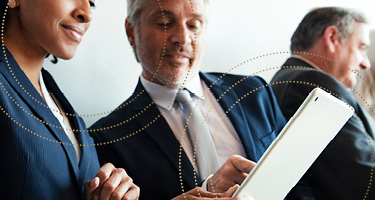Victoria has led the charge with changes to its Occupational Health and Safety Act and now we have amendments to the Model WHS Regulations (Regulations), yet to take effect in each state and territory, to impose a positive obligation on persons conducting a business or undertaking (PCBUs) to manage risks posed by psychosocial hazards in the workplace.
The Regulations define psychosocial hazard, and it is scarily broad if you are an employer. In addition, the Regulations propose some possible control measures to manage risks arising from such hazards. Accompanying this is the national model, the Code of Practice for Managing Pyschosocial Hazards (Code) should be reviewed by employers to ensure safety compliance.
Duty of care for employers and PCBUs
It is a truth universally acknowledged that PCBUs have a primary duty of care to ensure the health and safety of workers and others, which includes both physical and psychological health. As such, the duty to eliminate or minimise risks arising from psychosocial hazards is perhaps not so new, as it is improved and innovated upon.
The Code at best offers some guidance on how PCBUs might meet the new improved obligations. In doing so, however, it also serves as a wake-up call to employers to undertake a careful review and upskill managers with soft people management skills to address issues of psychological safety.
It is worth noting that SafeWork NSW is already devoting resources to training up and creating an investigation and enforcement capability amongst their existing inspectors.
Into the labyrinth – what do psychosocial hazards look like?
It will not come as a surprise that it is not as simple as looking for the mythical form of a minotaur. These hazards and their associated risks lie deeper in the way work and organisations are designed and run. Here, we are concerned with hazards that create a risk of physical or psychological harm within the design or management of work, training, the working environment overall and workplace behaviours to name but a few.
Here is a summary of some of the key contenders that we anticipate will keep employers up at night as they grapple with the question of how to navigate and manage in this labyrinth of regulation.
Hazard Considerations:
- poor support;
- workload levels/demands;
- traumatic events or exposure to material (vicarious trauma);
- isolated or remote work;
- low job control;
- clarity of role or lack thereof;
- violence, bullying, aggression, harassment and conflict; and/or
- inconsistent or poor organisational “justice”.
How does the Code operate?
The Code is intended to provide some practical guidance on how to comply with the legal standards imposed by the law. Unsurprisingly, the Code encourages the adoption of a risk management process that targets the identification, management, and control of workplace psychosocial hazards. As an aside, it is worth noting that the Code must be approved in each State or Territory to have legal effect. While NSW and Western Australia have issued Codes this has not yet happened in the harmonised States and Territories.
Courts, with the exception of Queensland, typically regard an approved code of practice as evidence of what is known about a hazard, risk or control and to assess what is reasonably practicable to eliminate or minimise risk and discharge one’s duty.
Queensland WHS laws go one step further, by relying on Codes as setting a minimum standard.
Navigating the labyrinth? More than just a ball of thread required.
1. Identify the hazards
To do this well, it is critical that your people collaborate and share their experiences with a view to establishing what specific hazards are relevant. Surveys, workshops and a review of previous records of complaints, absenteeism exit interviews and turnover data to identify trends are key.
2. Assess the risk
The frequency of the task, giving rise to the hazard and risk and the severity of any risk consequence, need to be assessed and documented in a risk register. Here, it is worth noting psychosocial hazards and their risks may need to be assessed collectively and on a compounding basis.
3. Implement Controls
A PCBU must eliminate the risks if it is reasonably practicable to do so, or otherwise minimise the risks so far as reasonably practicable.
The Code provides information on the control measures that can be implemented for each common psychosocial hazard.
For example, for risks associated with job demands, the Code recommends that PCBUs have regular discussions about work expectations and deadlines and implement a system for escalating issues.
A particular challenge for employers will be how to design controls that minimise or eliminate risk in the context of executing management action. Management action is typically a shorthand recognised term that catches the execution of the Managerial prerogative to manage in the context of delegating work, assessing performance, taking disciplinary action and the like.
4. Review control measures
Unsurprisingly, the Code, having adopted the Hierarchy of Controls approach and recommends regular reviews of any systems that are implemented.
5. Document
Ideally Employers should be updating their risk registers regularly and ensuring that consultations with workers, is included in such a process. It maybe that performance management processes, and the way work is designed and organised, will need to be looked at afresh through this new lens of risk.
Key takeaways for employers
The regulatory amendments are coming to each State and Territory and the introduction of the Code demonstrates that WHS Regulators will be focusing on the management of psychosocial hazards, especially given the further anticipated reforms in other legalisation yet to come regarding sexual harassment in the workplace.
Our workplace, health and safety team recommend that PCBUs lay aside time now to consider the Code and the Model Regulations to determine how they will respond to this emerging regulatory trend.
















